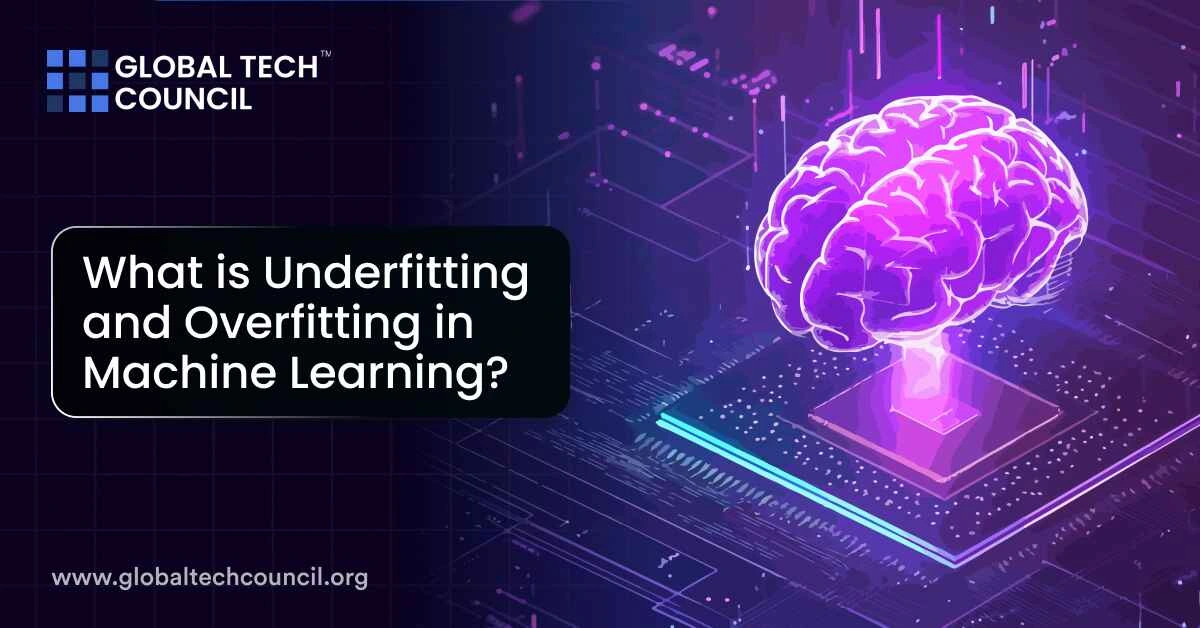When dealing with machine learning models, two frequent problems can influence how the model works: overfitting and underfitting. These issues relate to how well the model can handle new data. Simply put, overfitting happens when the model learns too much from the training set, while underfitting means it learns too little.
What is Overfitting?
Overfitting occurs when a model becomes too focused on the training data, picking up on irrelevant details and noise. Because of this, the model might perform extremely well on the data it was trained on but might struggle when tested with unseen or unfamiliar data. Overfitting leads to high variance, where the model becomes too focused on minor changes in the training set, making it harder to deal with fresh data.
What Causes Overfitting?
There are a few reasons a model might overfit:
- Model Complexity: A model that has too many parameters may become overly flexible, capturing patterns that don’t actually matter.
- Noisy Data: If the training data contains outliers or noise, the model may treat these as important, which can hurt its ability to generalize.
- Limited Training Data: A small amount of training data may cause the model to overfit since it hasn’t seen enough variation to generalize properly.
- Long Training Time: If you train the model for too long, it can start memorizing the training data instead of learning patterns that generalize to new data.
How to Spot Overfitting
One way to spot overfitting is by comparing errors on the training and test sets. If the model does much better on training data than on validation or test sets, overfitting is likely happening. Cross-validation helps detect overfitting early. It does this by checking the model’s performance on different data subsets, making sure it stays consistent.
Ways to Prevent Overfitting
Here are some methods to help avoid overfitting:
- Regularization: This method introduces a penalty to reduce model complexity, preventing it from picking up irrelevant patterns. Common methods include L1 and L2 regularization.
- Early stopping: You can observe how the model behaves on a validation set and halt the training when it begins learning unnecessary patterns.
- Data Augmentation: Creating additional synthetic data, like rotating or cropping images, can help the model generalize better.
- Simplifying the model: Cutting down the number of parameters or selecting simpler methods helps keep the model from focusing too much on the training data.
What is Underfitting?
Underfitting occurs when the model is overly simple and cannot capture the data’s structure. This means it doesn’t learn enough from the training data, leading to poor results on both training and test sets. Essentially, the model lacks the capacity to pick up on the patterns in the data, resulting in high bias.
What Leads to Underfitting?
Several factors can cause underfitting:
- Simple Model: If the model is too basic, such as using linear regression for complex data, it won’t be able to pick up on more intricate patterns.
- Short Training Time: If the model hasn’t been trained for long enough, it may not have learned all the important details in the data.
- Lack of Features: If the input data doesn’t contain meaningful features or good representations, the model will struggle to learn effectively.
- Too Much Regularization: While regularization is important to prevent overfitting, too much of it can cause underfitting by restricting the model’s learning too much.
Addressing Underfitting
Here are some ways to tackle underfitting:
- Increase Model Complexity: Using more complex models like deeper neural networks can help the model capture underlying patterns more effectively.
- Extending Training Time: Training the model for a longer period allows it to better understand the data and helps avoid underfitting.
- Feature Engineering: Improving the quality or quantity of input features can help the model better understand relationships within the data.
- Reduce Regularization: If regularization is too strong, loosening it can give the model more freedom to learn from the training data.
Finding the Balance: Bias and Variance
The main challenge behind overfitting and underfitting is finding a balance between bias and variance. Bias arises when a model is too basic, resulting in underfitting due to inadequate learning from the data. In contrast, variance refers to the model being overly sensitive to the training data, which leads to overfitting. The key is picking a model that is detailed enough to capture important patterns but not so complex that it memorizes irrelevant details.
Achieving this balance requires adjusting hyperparameters, selecting the appropriate model complexity, and using techniques like cross-validation to monitor performance throughout the training process.
Conclusion
Overfitting and underfitting are two major challenges in machine learning, both of which can affect how well a model works. Overfitting results in a model that excels on training data but performs poorly on new data. Underfitting causes the model to do poorly across both training and test data.
Balancing these problems involves choosing the right model, providing adequate training, and using techniques like regularization and early stopping. Understanding these ideas helps create models that work better with real-world data, ultimately leading to improved performance.
